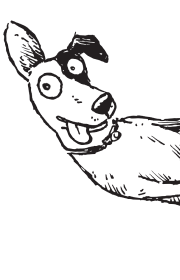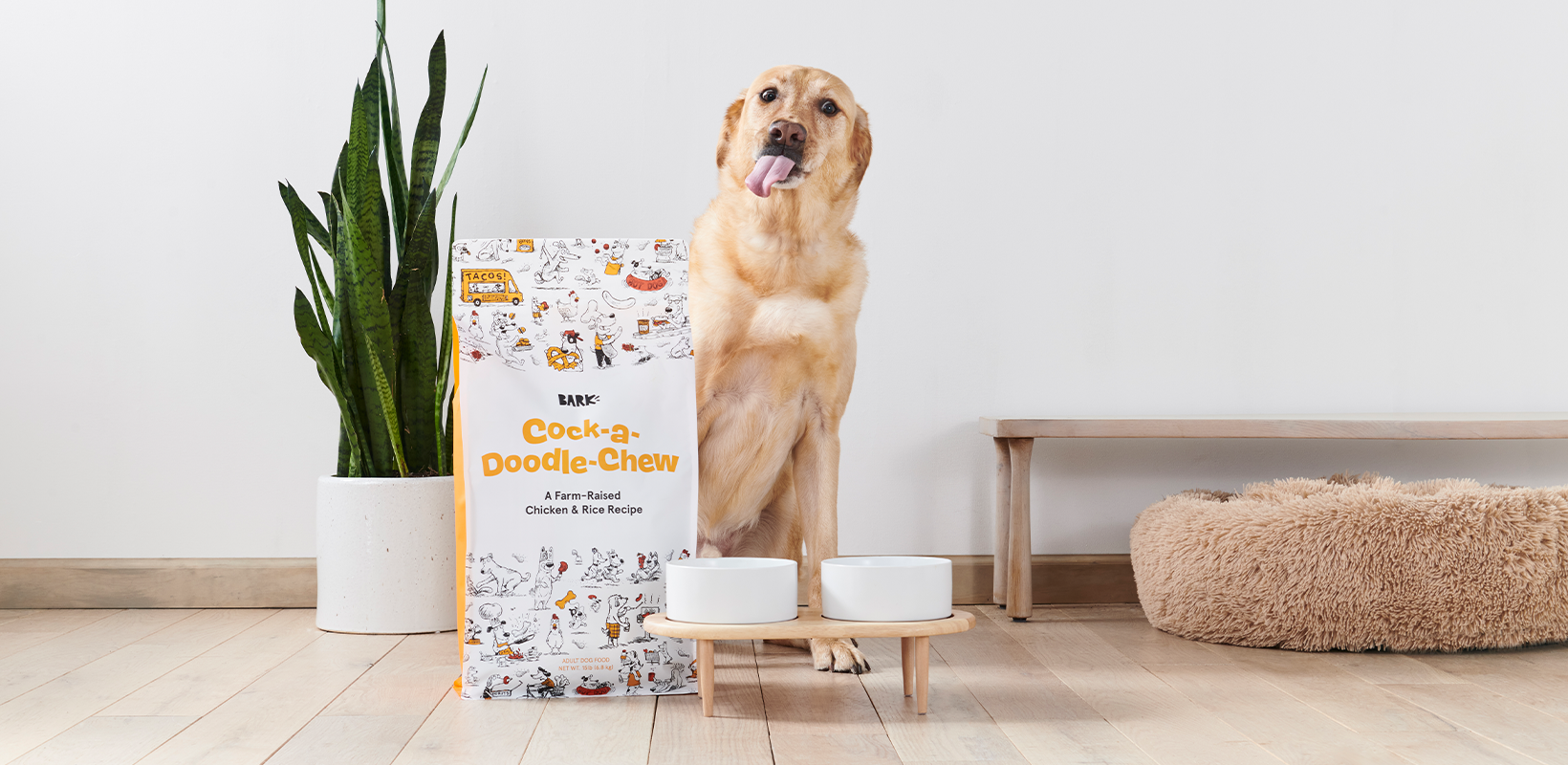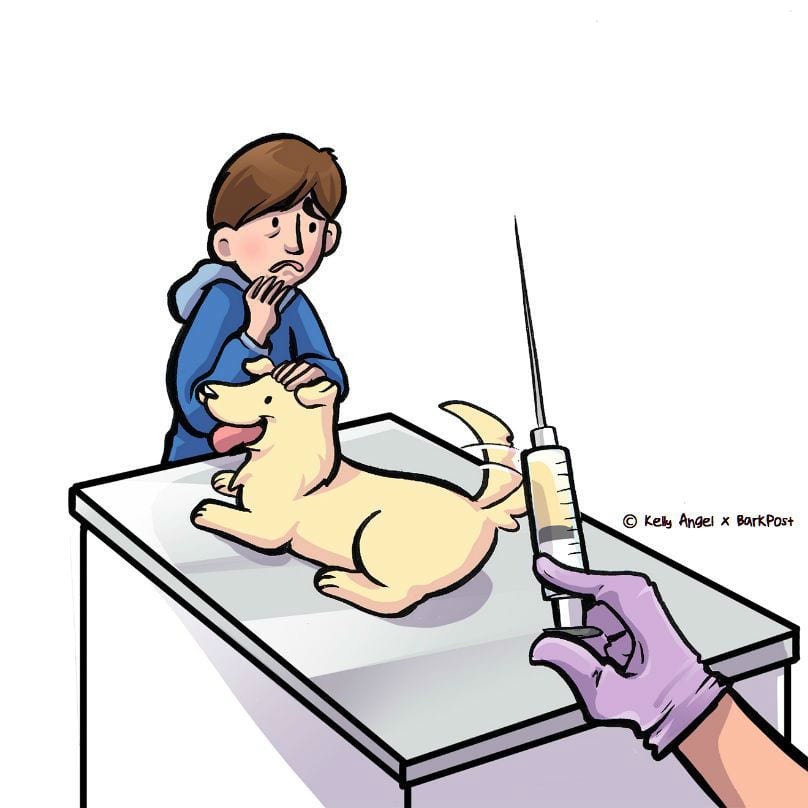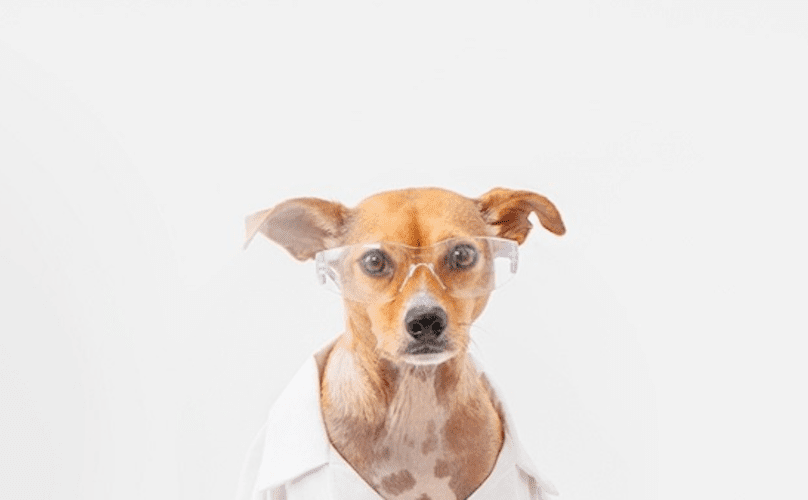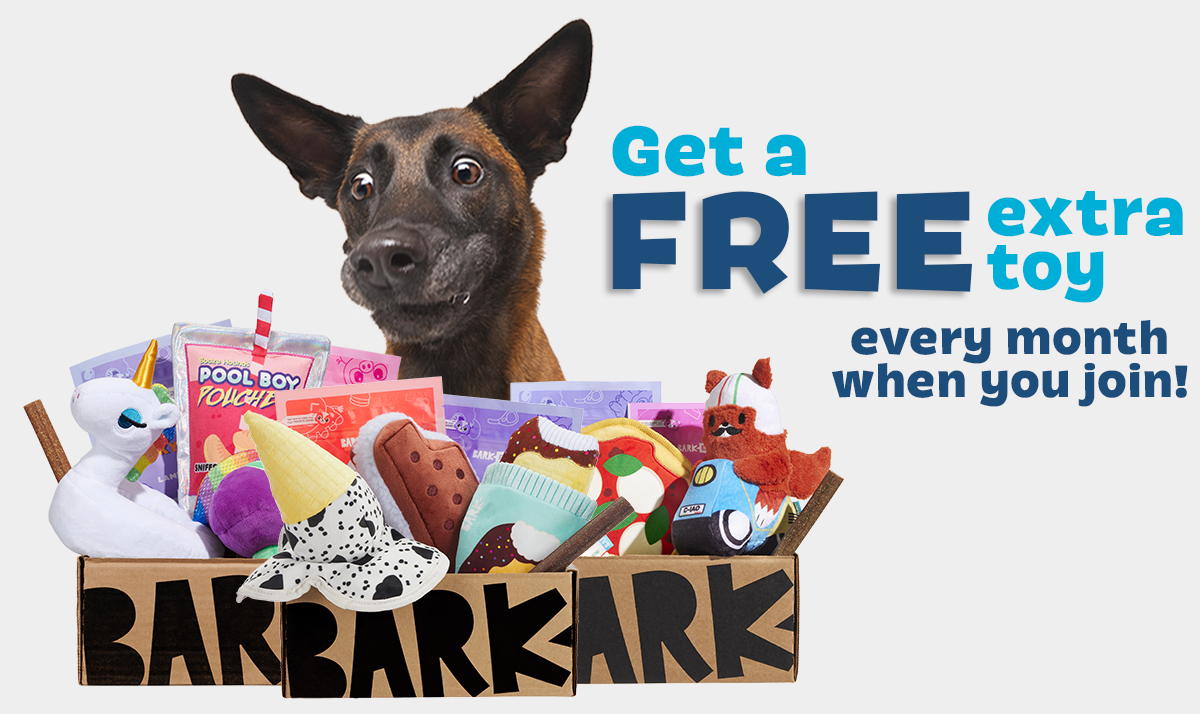Every dog has their go-to toy, and discovering what it is can tell you a lot about your pooch’s personality, breed, and genetic history. What does my dog’s love of repetitive, ear-splitting squeaking say about him? How about the neighbor dog’s obsession with tennis balls, and your pup’s desire to chew sticks? Read on and find out, fellow parents! If you are in the market for some high quality goodies to replace your dog’s played out toys and treats, don’t forget to check out BarkShop!
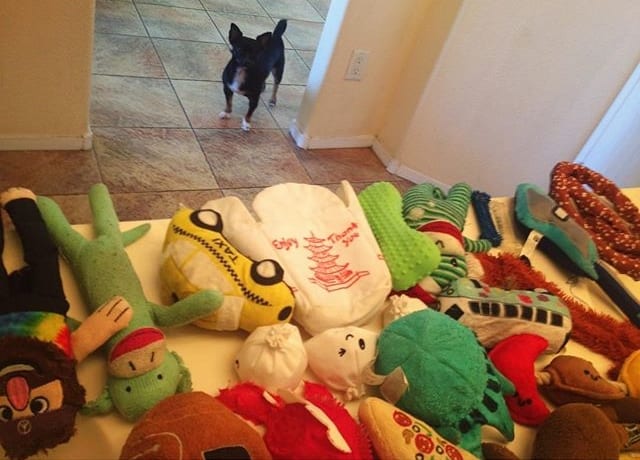

Pups that gravitate towards squeaky toys are simply following their instinct to hunt. Wild canines must search out and kill their food. During the attack the smaller animal cries out, and the squeak sound during play is reminiscent of this. I certainly don’t think that my 15-pound Poodle Mix is imagining a terrified bunny while gnawing on his yellow Funshine Care Bear, but somewhere in his doggy brain the instinct to pounce and attack is stimulated.
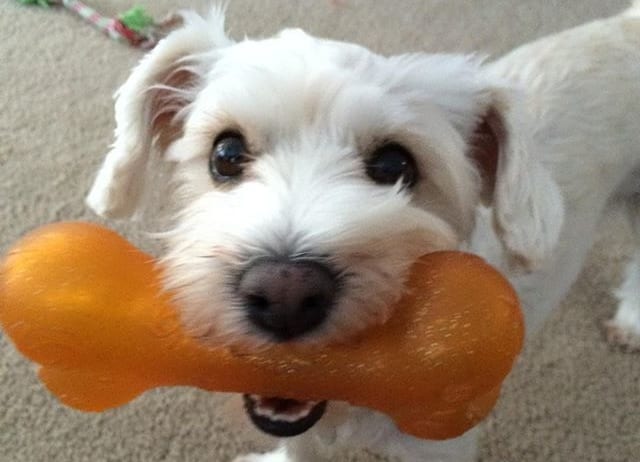

For dogs that take the extra step of shredding their toy and removing the squeaker, be sure to supervise play times. A swallowed squeaker can be a choking hazard or become stuck in the GI tract.
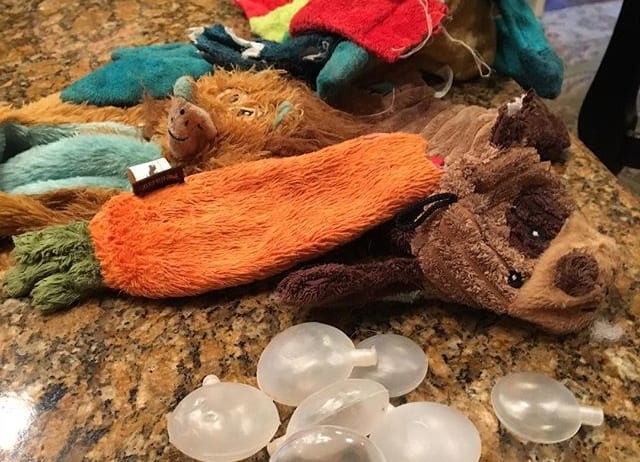

Some dogs always seem to have a soft, plush toy like a stuffed animal loosely grasped in their jaws. They march around the house with it, snuggle in bed with it, even lick or suck on it affectionately. Labs and Retrievers are known for carrying plushies as an inherent reminder of their breeds’ talent for recovering duck carcasses for their hunter masters. The goal is to return the bird in good shape, thus the loose, gentle grip of the jaws.
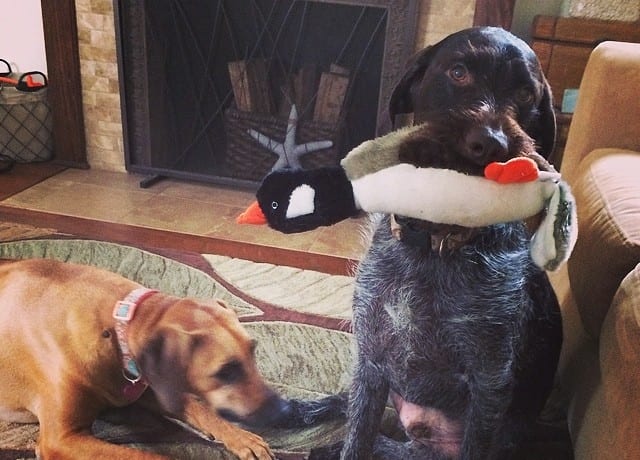

Sleeping with a soft toy and mouthing it affectionately is often seen in dogs taken from their mothers and litter mates before they were entirely weaned. Puppy mill survivors and those orphaned as puppies often act out nursing and litter mate behaviors on their soft toys. Mothers who lost their pups or experience false pregnancies may also treat a plushy as their lost pup. These activities are only problematic if they become obsessive, lead to aggression, or pose a risk of swallowing part of the toy.
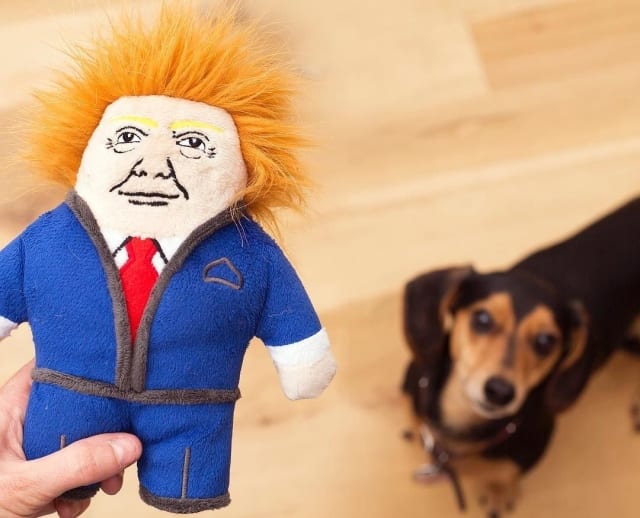

We’ve all known a dog that would gladly chase a thrown tennis ball until they collapsed from exhaustion. This one is pretty simple to decipher – some dogs live for the chase. Pups that feel compelled to dart after a squirrel or leap into the air after a flying bird are acting out their instinct to hunt down a moving target.
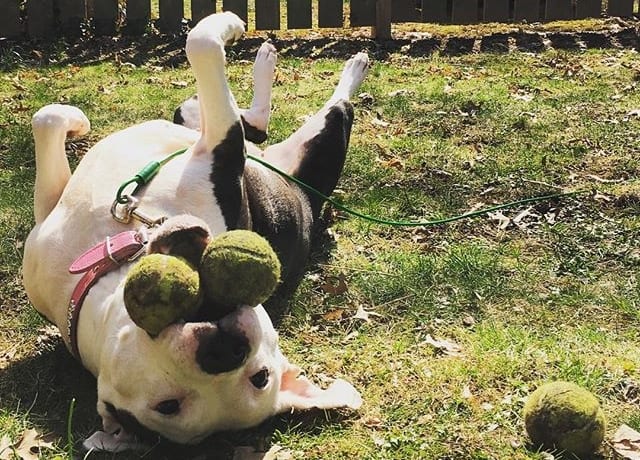

Terriers and Shepherds are well known for their energy and love of chase games. This is why these breeds often excel at Fly Ball, Agility, Dock Diving and Frisbee challenges. A vigorous game of fetch is healthy for your dog in almost every way. If your dog is a fetch junkie, be sure to keep him well hydrated and prevent overheating and exhaustion with frequent rests.
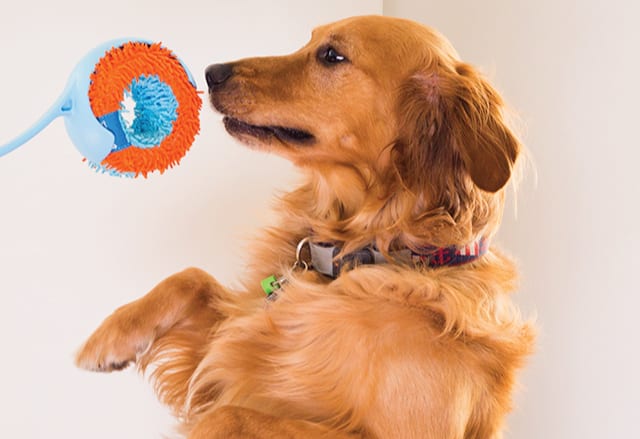

Tuggies
Bully breeds like English Bulldogs and Frenchies are known to fancy a good game of tug-o-war. Boston Terriers and Pugs also tend to enjoy tugging. This type of play should be controlled so as not to get out of hand. Be sure to train your tugger to release on your command.
There are two popular theories on the thrill of the tug. The first suggests that grasping and tugging is a throwback to tearing flesh from the carcass of a kill. Wild dogs and wolves hunt in packs. When the prey is taken down, the members tear away meat as quickly as they can before the upper level dogs step in.
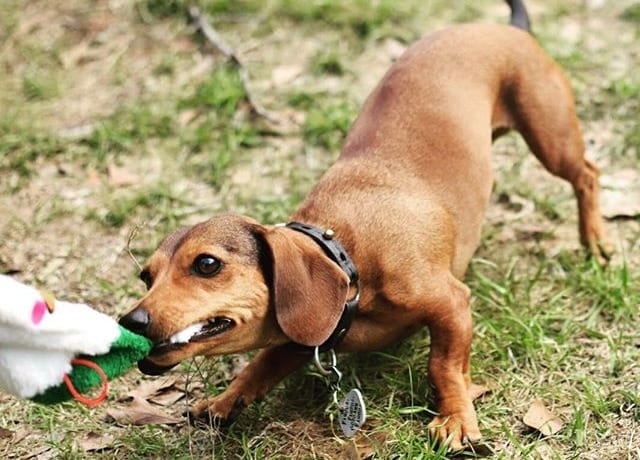

The other theory involves the breeding history of Bullies. Historically, stout, muscular dogs with short, powerful jaws were useful in controlling livestock and helping corral animals for hunters. They would bite down and hold until commanded to release. Tugging games are reminiscent of these struggles. But, as I’m sure you’ve noticed, all dogs love a good game of tug from time to time!
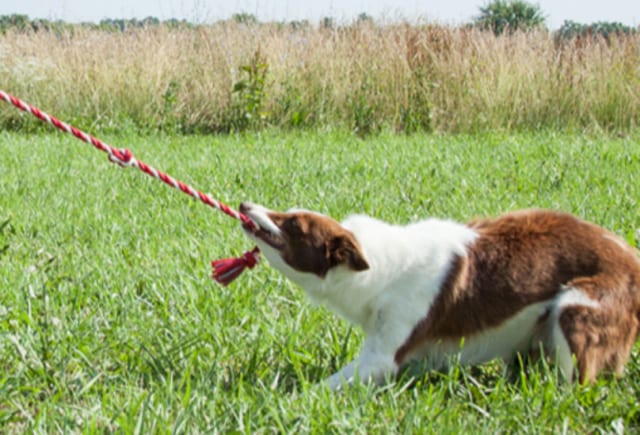

Pups that love to solve a good puzzle are probably only after one thing: Treats! Sure, they’re brainy and determined types, but let’s not forget what the reward at the end of the game is. Cognitive toys are great for refocusing nervous or nosy dogs when you have to leave the house or do not have time to engage them in play personally. These toys provide exercise, mental stimulation, and distraction – all with a much earned prize at the end! No wonder smart pups love these toys!


Undomesticated dogs fending for themselves chew through the bones of prey in order to consume the delicious, fatty bone marrow. Bone chewing also helps keep the teeth and gums clean and healthy. Domestic chewers instinctively enjoy a vigorous gnaw session. Most dogs’ diets consist of kibble or canned food. The desire to put their powerful jaws to work is quite normal, and bones are a tasty alternative to your furniture!
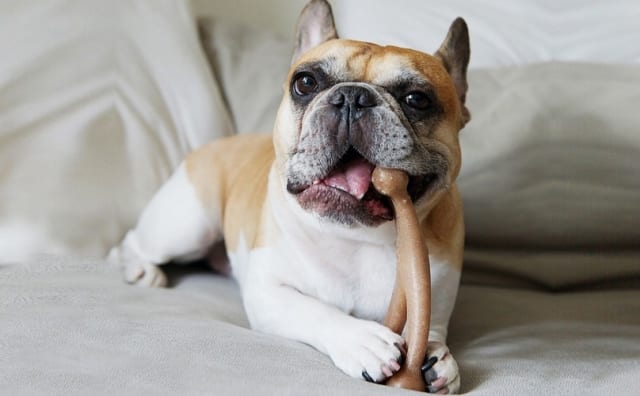

Be sure to consult your veterinarian before giving any kind of natural bone to your dog – raw or cooked. Too much fat or bone shards could be hazardous. Synthetic chew bones like BeneBones are a safe and tasty alternative.
Nature
Dogs investigate the world with their mouths. It is common for puppies, and even adult dogs to examine fascinating outdoor goodies like pine cones, rocks, sticks, bugs and grass by picking them up in their mouths. Sticks may be reminiscent of the shape and texture of bone – which we know they love to chew. A nice round rock may remind them of a ball.
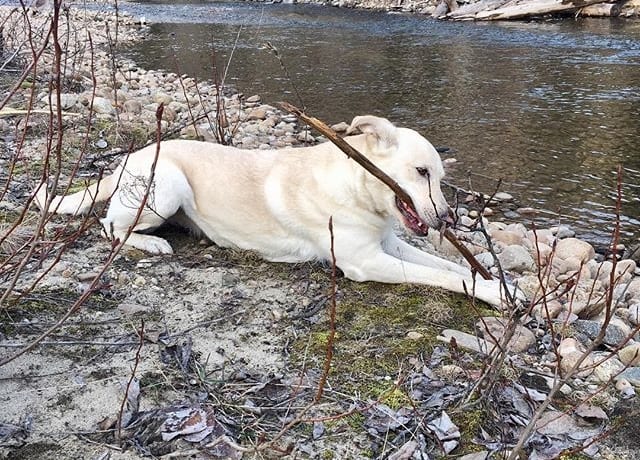

There is cause for concern if your dog’s favorite means of play is exploring nature with his mouth. Sticks and rocks can injure the teeth and soft tissue of the mouth, cause choking, or pose risks to the digestive tract. Dogs that swallow dirt and grass may ingest parasites or pesticides. It is best to redirect these pups to more appropriate toys.
You
As far as your dog’s concerned, you hung the moon. Their true favorite toy is the one they get to play with with you. Without question, dogs live for every moment of undivided attention they can get from us. Spare a few minutes every day to go outside and throw the ball, or get down on the floor and play with a favorite plushy. Encouraging healthy play behavior ensures a happy dog, strengthens your bond, and helps precocious pups avoid mischief.
Featured Image via Dina Fantegrossi
